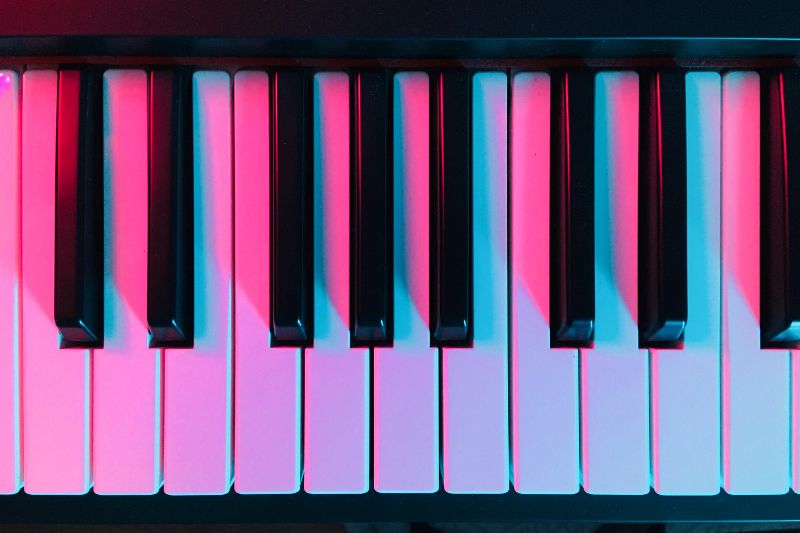The Art of Playing and Recognizing Melodies by Ear

What is the importance of ears in music perception and reproduction? A fantastic ear can ensure you can learn or play melodies by ear. If you have a good ear, you will not need music sheets to reproduce music.
Playing and recognizing melodies by the ear is one of the most desirable skills of any performing musician. It enables you to identify songs by melody. But what is the art of playing and recognizing melodies by ear? Below is a simple compilation that will help you understand how to identify melody in music.
Identify the notes by considering the scale
It is important to identify melody for every musician as it is the basic and essential element of musical composition. But no less important part of melody ear training is understanding scales. Scales are vital components of music that every musician needs to know; they are major or minor. Once you understand the scale, you can identify notes quickly. Scales contain a combination of seven notes in every octave. The seven notes include:
- First and last note: They are the tonic and are very stable and easy to find;
- The supertonic is the second note;
- The third note is halfway between the dominant and the tonic. It also goes by mediant;
- Forth note is also known as the superdominant;
- The Dominant is the fifth note;
- The sixth note is the submediant;
- The seventh note is the subtonic
The unique interval patterns between each note provide the scales’ personality. Scales are essential in producing great melodies and harmonic chord progressions.
Scales consideration can help you identify the key in which a music piece lies. If you are a beginner, the major scale should be the first place to start. In the Western world, the major scale is the essence of music.
Using more established, predictable patterns
Notes combined in a particular way in music form a chord. The chords then create a chord progression found mainly in popular music. Recognizing the patterns is vital as it will ensure you can anticipate any chord changes. It can also help you play other songs with similar patterns.
Training your ear to recognize predictable chord progression patterns can help you create incredible-sounding chords for your music. You can even produce emotional effects. In addition, music note recognition online can help you develop more established predictable patterns.
How to take advantage of the second note recognition mechanism?
Note ear training is vital as it ensures you can have a better pitch sense. It will enhance your ability to play and recognize melodies by the ear. Also, note-ear training will enable you to play a specific song after listening.
Playing by ear can be challenging if you need to distinguish between notes. However, understanding the mechanisms of note recognition can help you significantly.
Three primary mechanisms of note-ear training exist. The second note mechanism is one of the most vital. It ensures you can recognize a note by considering the scale.
If you listen to a note in a specific piece of music, you can sing the musical piece’s scale with your voice or in your head. Thus, you can quickly determine the particular note’s degree of the scale. One of the main benefits of second note recognition is that you require fewer skills. It will also help you with the development of the first note mechanism.
Using the third note recognition method
The third note recognition method involves the art of identifying several notes at the same time. You only need to refer to the higher-order familiar patterns. A music note recognition app can also help you identify the third note.
The third note mechanism ensures you can recognize several notes concurrently. For instance, your brain can easily quickly relate if you hear the “4, 2, 4” note sequence. The relation occurs with a familiar sequence portion you have listened to in a known melody.
A temporary musical memory
About 1 in 20 individuals do not need sheet music to play melodies correctly. You can obtain a temporary musical memory if you cannot play melodies by ear. Musical memory involves a person’s ability to recall music-related information, such as chord progressions.
One way you can obtain temporary musical memory is through association and repetition. Repetition involves repeating musical segments until you can play them by memory. The repetition can enhance your musical memory.
On the other hand, association involves including a mental tag to every segment you find significant and then repeating them. Repetition and association act as effective methods of building musical memory. The memory ensures you can play by the ear or recognize melodies easily.
Concluding remarks
An excellent inner ear is vital in comprehending musical composition. One essential thing to note is that there are no shortcuts to recognizing or playing melodies by ear. You will need to apply significant effort and time to gain the skill. Also, you will need to invest in ear training.











Leave a Reply